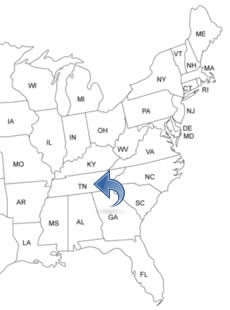TENNESSEE PEOPLE SEARCH!
- ✔ Contact Info
- ✔ Phone Numbers
- ✔ Criminal Records
- ✔ Income Info
- ✔ Neighbors
- ✔ People's Age
- ✔ Property Ownership
- ✔ And Much More
Memphis, Tennessee
Memphis is located in the south-western part and is the second largest city in the U.S. State of Tennessee. The River City. Memphis is perhaps best known for the song Walking in Memphis, for Elvis Presley's Graceland Mansion, and as the birthplace of the blues. The city has many museums, fine art galleries, and parks. Memphis has one of the purest water supply in the USA and more trees per square mile than any other city.
To See And To Do In Memphis
- Graceland
- Mississippi River Tour
- Memphis Botanic Garden
- Memphis Rock 'n' Soul Museum
- Memphis Walk of Fame
- Peabody Place Museum
- Downtown Memphis
- National Civil Rights Museum
- Sun Studio
- Dixon Gallery and Gardens
- Belz Museum of Asian & Judaic Art
- Memphis Zoo
- The Pink Palace Museum
- Ornamental Metal Museum
- Lichterman Nature Center
- Stax Museum of American Soul Music
- Brooks Museum of Art
- Cotton Museum
- Gibson Guitar Factory
- Shelby Farms Park
- Overton Square
- Overton Park
- Children's Museum of Memphis
- Mud Island River Park
- National Ornamental Metal Museum
History Of Memphis - Timeline
In 1541, the first European to see the area what is now Memphis was the Spanish explorer Hernando de Soto. His expedition encountered the Chickasaw Indian tribe who attacked the explorer's camp during the night. About 40 men were killed but the Indians let Hernando de Soto go free.
In 1682, French explorers built Fort Prudhomme, a stockade fortification. Fort Prudhomme was the first structure built by the French in Tennessee. Its exact location is not known. In 1739, the French fortification Fort Assumption was constructed. The fort was used as a base against the Chickasaw Indian tribe.
In 1818, white settlers came to the site after the Federal Government purchased it from the Chickasaw Nation, who had signed a treaty with the government.
In 1819, Memphis was founded by a group of investors. In 1826, Memphis was incorporated as a city and the newspapers, the Memphis Advocate and the Western District Intelligencer started. In 1828, the yellow fever epidemic killed 150 people. In 1829, the first fire company is organized.
In 1830, a Town Hall was built. In 1830, the cotton industry was big in the area and Memphis was a major slave market. In 1845, U.S. government established a navy yard in Memphis. In 1848, the first free public schools opened.
In 1857, the railroad was completed. In 1861, during the Civil War, Memphis was a Confederate stronghold. In 1862, a naval battle was fought on the Mississippi River in Memphis. The Union fleet defeated the Confederate naval forces and occupied the city. In 1865, a mule-drawn street railroad was established.
In 1869, the original Peabody Hotel was built. In 1873, 1878 and 1879, more than 7600 people died in the city in yellow fever epidemic. At the time there were about 40,000 people living in the city.
In 1891, electric streetcars were operating in the city. In 1893, the first public library in Memphis opened. In 1895, the ten-story Porter Building was completed.
In 1900, more than 102,000 people were living in the city. In 1906, the Overton Park Zoo opened. In 1925, the current Peabody Hotel building, on Union Avenue, was built.
In 1925, the airport was completed. In 1951, the Tri-State Defender, a local black newspaper, began its publication. In 1952, the first national motel chain, Holiday Inn, was founded in Memphis by Kemmons Wilson. Also in 1952, Sun Records started. In 1957, Stax Records opened. In 1968, Dr. Martin Luther King was assassinated at the Lorraine Motel in Memphis. In 1973, FedEx Corporation moved to Memphis. In 1977, Elvis Presley died at Graceland.

